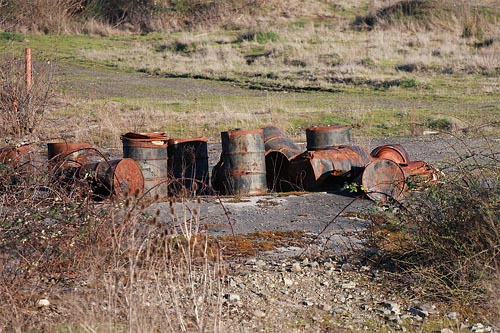Woburn Massachusetts Water Contamination: Legal Actions and Resolutions

Introduction
Woburn, Massachusetts, a quaint city known for its rich history and vibrant community, faced a devastating environmental crisis that shook its foundation. The water contamination issue in Woburn emerged as one of the most notorious environmental disasters in American history, highlighting the severe consequences of industrial pollution. Understanding the depth of this crisis is crucial, not only for the residents of Woburn but also for communities worldwide that could face similar challenges.
1. Historical Background
1.1. Woburn’s Industrial Past
Woburn’s industrial roots date back to the 19th century, with the city thriving on leather tanning and manufacturing industries. These industries, while providing economic growth, had a dark side. The lack of stringent environmental regulations during this period led to improper disposal of industrial waste, significantly impacting the local environment. Factories frequently dumped chemicals into the nearby Aberjona River and its surrounding areas, setting the stage for a future disaster.
1.2. Discovery of Contamination
The discovery of water contamination in Woburn began in the late 1970s when residents noticed a peculiar taste and odor in their tap water. The community’s growing concern led to scientific investigations, which revealed alarming levels of toxic chemicals such as trichloroethylene (TCE) and perchloroethylene (PCE) in the water supply. This discovery was a turning point, igniting a series of legal battles and environmental investigations.
1.3. Key Figures and Organizations
The fight against water contamination in Woburn saw the involvement of several key figures and organizations. The Environmental Protection Agency (EPA) played a pivotal role in investigating and addressing the contamination. Additionally, local activists and scientists worked tirelessly to bring the issue to light. Their combined efforts were crucial in holding the responsible parties accountable and advocating for the community’s health and safety.
2. Causes of Contamination
2.1. Sources of Pollutants
The primary sources of pollutants in Woburn’s water were industrial chemicals used in the leather tanning process. TCE and PCE, solvents used for degreasing and dry cleaning, were identified as the main contaminants. These chemicals, highly toxic and persistent in the environment, leached into the groundwater over decades, making their way into the city’s water supply.
2.2. Environmental Impact of Industrial Waste
The environmental impact of industrial waste in Woburn was profound. TCE and PCE, along with other contaminants, caused severe degradation of local ecosystems. Aquatic life in the Aberjona River suffered tremendously, with significant declines in fish and plant populations. The long-term exposure to these chemicals also posed serious risks to the local wildlife, disrupting the ecological balance.
2.3. Faulty Waste Management Practices
Faulty waste management practices were a significant contributor to the water contamination crisis. Factories in Woburn often disposed of their waste in unlined landfills and directly into the river. These practices, coupled with the absence of adequate environmental regulations, allowed hazardous chemicals to infiltrate the groundwater. The lack of proper oversight and enforcement exacerbated the situation, leading to widespread contamination.
3. Health Implications
3.1. Health Issues Linked to Contaminants
The health implications of the water contamination in Woburn were severe and far-reaching. Residents exposed to the contaminated water reported a range of health issues, including skin rashes, respiratory problems, and gastrointestinal illnesses. More alarmingly, there was a notable increase in cases of leukemia and other cancers, particularly among children. These health issues underscored the urgent need for remedial action and medical intervention.
3.2. Studies and Research Findings
Numerous studies and research efforts were undertaken to understand the full extent of the health impacts. The Massachusetts Department of Public Health conducted extensive investigations, confirming the link between the contaminants and the high incidence of cancer in Woburn. These findings were critical in substantiating the residents’ claims and fueling legal actions against the responsible parties.
3.3. Personal Stories and Community Impact
The personal stories of Woburn residents highlighted the human toll of the contamination crisis. Families who lost loved ones to cancer and other illnesses shared their heart-wrenching experiences, bringing a human face to the tragedy. The community’s resilience and solidarity in the face of adversity were commendable, with residents banding together to seek justice and advocate for a safer environment.
4. Legal and Regulatory Actions
4.1. Lawsuits and Legal Battles
The discovery of water contamination led to several high-profile lawsuits. In the early 1980s, families affected by the contamination filed a lawsuit against the companies responsible, including W.R. Grace and Beatrice Foods. The legal battles were arduous, marked by intense courtroom drama and scientific testimony. The eventual settlements provided some relief to the victims but also highlighted the complexities of environmental litigation.
4.2. Government and EPA Involvement
The involvement of the EPA was instrumental in addressing the contamination. The agency conducted thorough investigations, identifying the sources and extent of pollution. The EPA’s intervention led to the classification of the Woburn site as a Superfund site, paving the way for federal funds to support the cleanup and remediation efforts.
4.3. Cleanup and Remediation Efforts
Cleanup and remediation efforts in Woburn have been ongoing for decades. These efforts included the removal of contaminated soil, treatment of groundwater, and restoration of affected areas. While significant progress has been made, the process has been slow and costly, underscoring the long-term commitment required to restore the environment.
5. Current Status and Future Outlook
5.1. Present-Day Water Quality in Woburn
Today, the water quality in Woburn has improved significantly due to extensive remediation efforts. Regular monitoring and advanced water treatment systems have been implemented to ensure the safety of the water supply. However, the legacy of contamination still lingers, with some areas requiring continued attention and monitoring.
5.2. Ongoing Challenges and Concerns
Despite the progress, ongoing challenges remain. Residual contamination in some parts of Woburn continues to pose risks, and there are concerns about the long-term health impacts on residents. Community activism and awareness campaigns are crucial in addressing these challenges and ensuring that the issue remains a priority for local and federal authorities.
5.3. Future Prevention Strategies
Preventing future contamination requires a multifaceted approach. Strengthening environmental regulations, improving waste management practices, and fostering community engagement are essential steps. Lessons learned from the Woburn crisis can guide other communities in implementing preventive measures and ensuring a safer environment for all.
Conclusion
The Woburn water contamination crisis serves as a stark reminder of the consequences of industrial pollution and regulatory neglect. While significant strides have been made in addressing the contamination, the journey toward complete remediation and justice for affected residents continues. By learning from this tragedy, we can work towards a future where such environmental disasters are prevented, and communities are safeguarded against similar threats.





